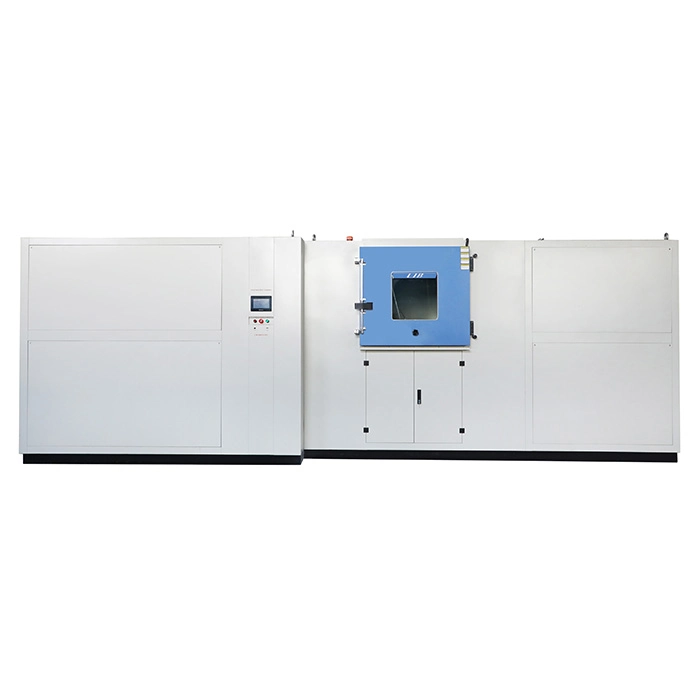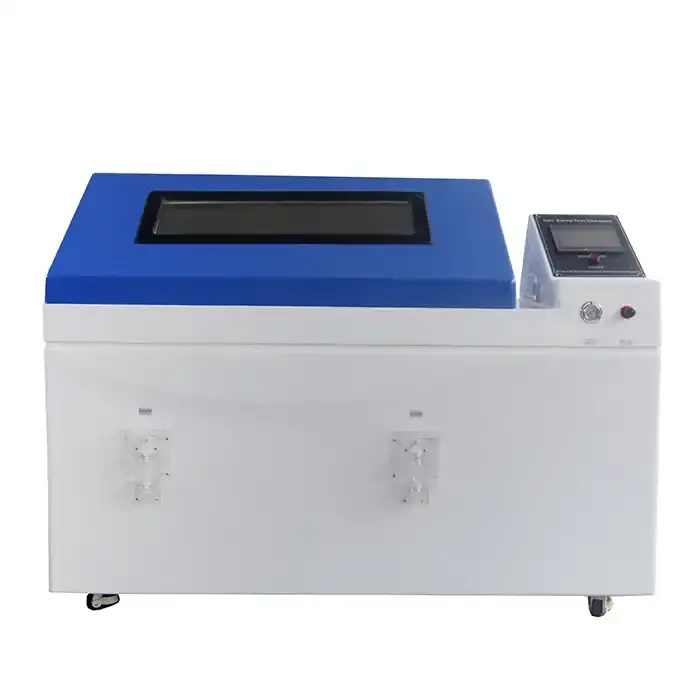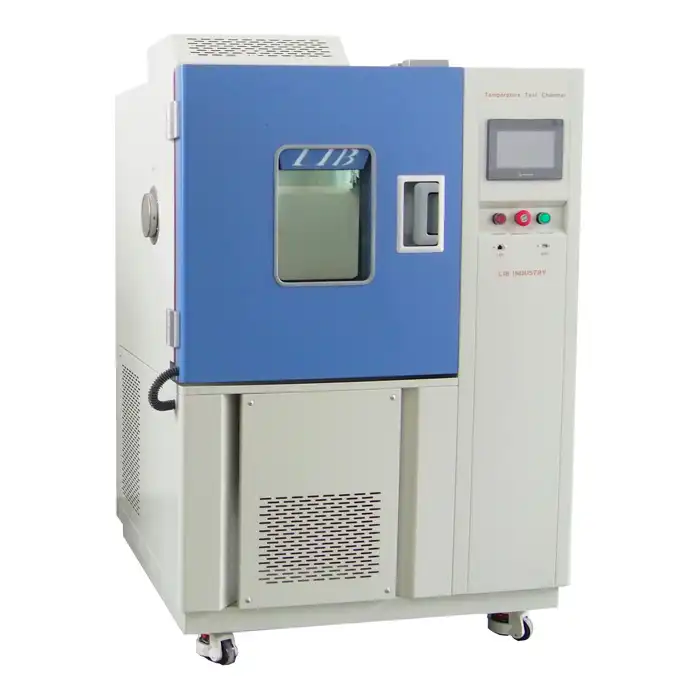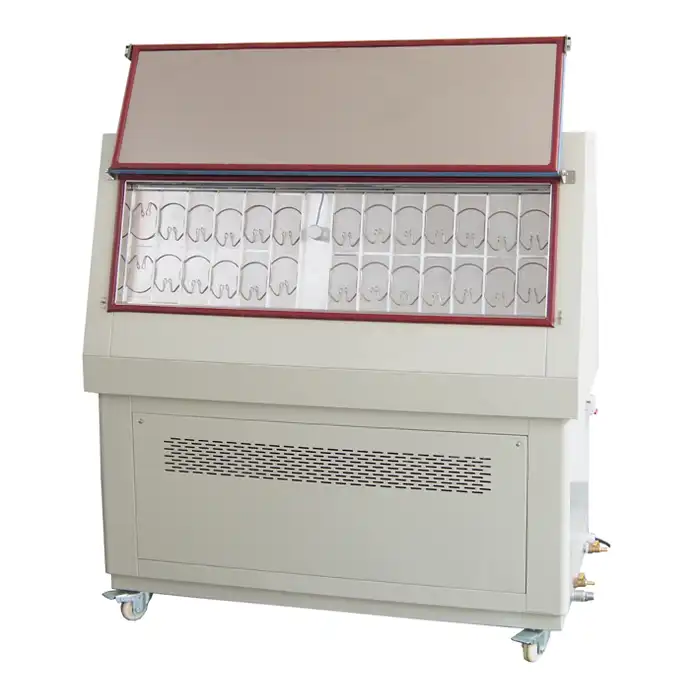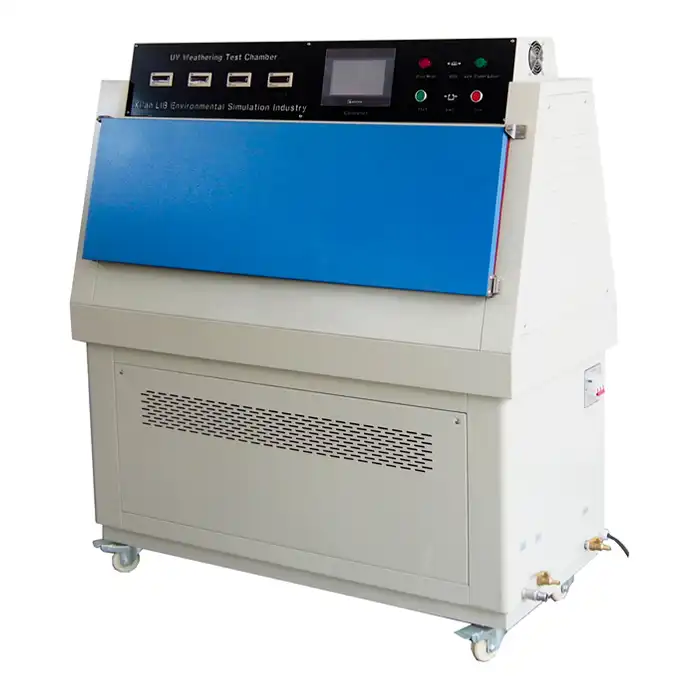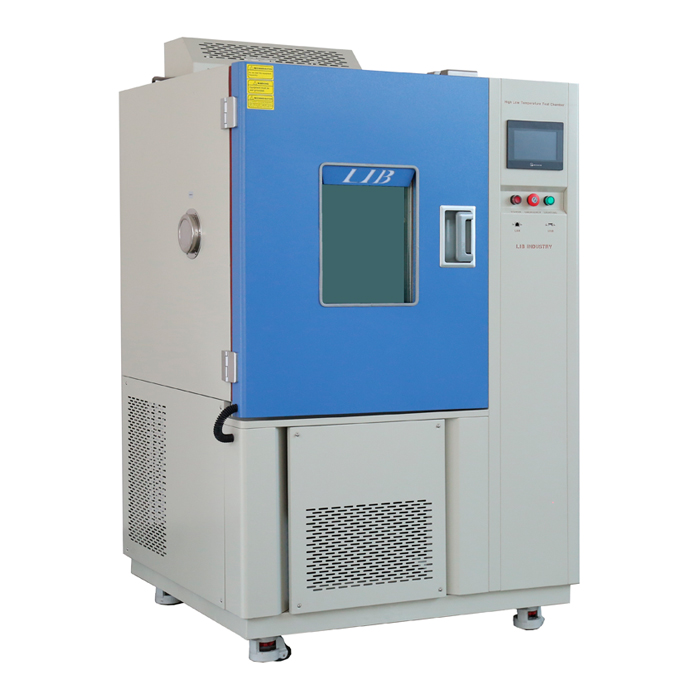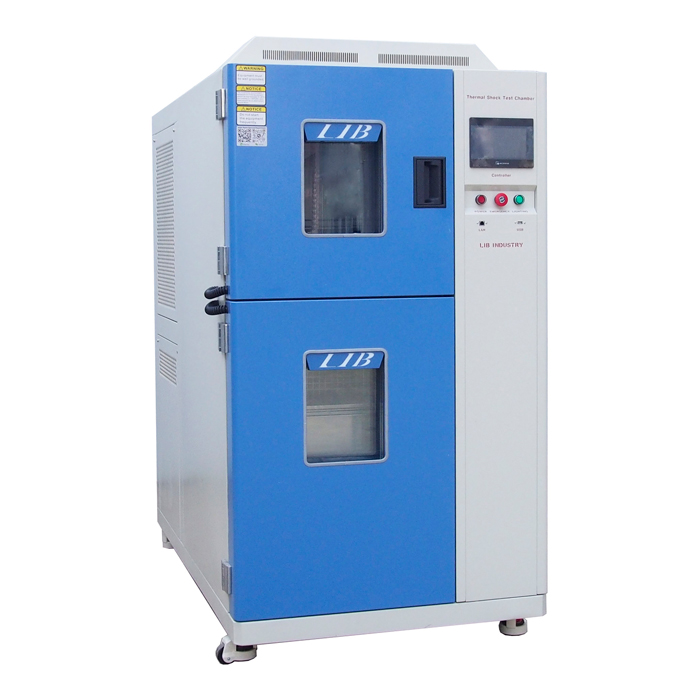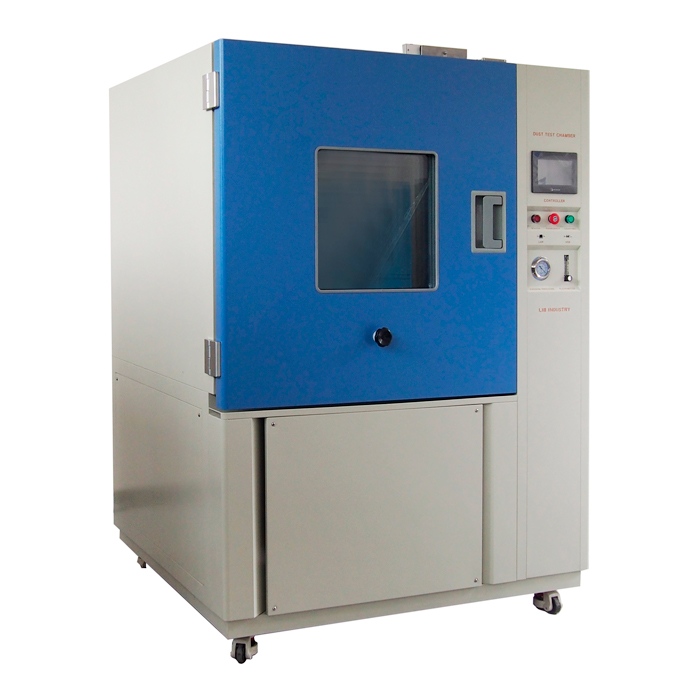How long does it take for the Accelerated Weathering Tester to simulate years of exposure?
Accelerated weathering testers are ingenious devices designed to simulate years of environmental exposure in a fraction of the time. The duration required for these machines to replicate long-term weathering effects varies depending on several factors, including the specific material being tested, the desired simulation period, and the intensity of the test conditions. Generally, accelerated weathering testers can compress years of natural weathering into weeks or months. For instance, a typical test might simulate 5-10 years of outdoor exposure in just 1000-2000 hours of accelerated testing. This remarkable time compression allows manufacturers to rapidly assess product durability, optimize formulations, and bring more resilient products to market efficiently. However, it's crucial to note that the exact correlation between accelerated testing time and real-world exposure can vary, necessitating careful interpretation of results.

Understanding Accelerated Weathering Testing: Principles and Applications
The Science Behind Accelerated Weathering
Accelerated weathering testing is a sophisticated process that harnesses the power of controlled environmental conditions to simulate the effects of long-term exposure to natural elements. This technique is rooted in the fundamental principles of materials science and environmental physics. By subjecting test specimens to intensified levels of UV radiation, moisture, temperature fluctuations, and other environmental stressors, accelerated weathering testers can induce degradation processes that would typically occur over extended periods in real-world scenarios.
Applications Across Industries
The versatility of accelerated weathering testing makes it an indispensable tool across a wide range of industries. In the automotive sector, manufacturers employ weathering chambers to evaluate the durability of paints, coatings, and interior materials, ensuring vehicles maintain their aesthetic appeal and structural integrity over years of exposure to diverse climates. The construction industry relies heavily on these tests to assess the longevity of building materials, from roofing and siding to windows and sealants, helping to develop products that can withstand decades of environmental stress.
In the textile industry, accelerated weathering testers play a crucial role in developing fade-resistant fabrics and durable outdoor furnishings. The aerospace sector utilizes these systems to qualify materials for aircraft exteriors, ensuring they can withstand the harsh conditions encountered at high altitudes. Even the renewable energy industry benefits from accelerated weathering testing, using it to improve the durability of solar panels and wind turbine components, ultimately enhancing the longevity and efficiency of clean energy technologies.
Advancements in Weathering Chamber Technology
The field of accelerated weathering testing is continually evolving, with technological advancements pushing the boundaries of what's possible in simulating environmental exposure. Modern weathering chambers are equipped with sophisticated control systems that allow for precise manipulation of test conditions, including spectral distribution of light, temperature gradients, and humidity cycles. Some cutting-edge systems incorporate additional environmental factors such as salt spray, pollutants, or even microbial contaminants to create more comprehensive and realistic aging scenarios.
Furthermore, the integration of data analytics and machine learning algorithms is revolutionizing the interpretation of test results. These advanced tools can analyze complex degradation patterns, predict long-term performance with greater accuracy, and even suggest optimizations for material formulations. As the technology continues to advance, the correlation between accelerated testing and real-world performance is becoming increasingly refined, enabling more reliable predictions and faster product development cycles across industries.
Factors Influencing Simulation Time in Accelerated Weathering Testing
Material Properties and Composition
The inherent characteristics of the material being tested significantly influence the duration required for accurate simulation in an accelerated weathering tester. Different materials exhibit varying susceptibilities to environmental stressors, which in turn affects the rate at which degradation occurs. For instance, polymers with photo-stabilizers may require longer exposure times to manifest UV-induced degradation compared to their non-stabilized counterparts. Similarly, the chemical composition of paints and coatings can dramatically alter their resistance to moisture and temperature fluctuations, necessitating adjustments in test duration to achieve representative results.
Moreover, the physical structure of materials plays a crucial role in determining simulation time. Porous materials may absorb moisture more readily, accelerating certain degradation processes, while dense, non-porous materials might require extended exposure to exhibit similar effects. The thickness and surface area of test specimens also factor into the equation, as these parameters influence the rate at which environmental stressors can penetrate and affect the material's bulk properties. Consequently, accelerated weathering protocols often need to be tailored to the specific material under investigation, balancing the desire for rapid results with the need for accurate representation of long-term environmental effects.
Environmental Factors and Test Intensity
The intensity and combination of environmental factors simulated in the accelerated weathering tester are pivotal in determining the duration required to replicate years of natural exposure. Higher intensities of UV radiation, for example, can accelerate photo-degradation processes, potentially compressing years of solar exposure into weeks. However, excessively high intensities may induce degradation mechanisms that are not representative of natural weathering, skewing the results. The challenge lies in finding the optimal balance that accelerates aging without fundamentally altering the degradation pathways.
Temperature and humidity cycles also play a significant role in simulation time. Rapid and extreme fluctuations can induce thermal and hygroscopic stresses more quickly than gradual changes, potentially shortening the required test duration. However, these accelerated cycles must still accurately represent the cumulative effects of countless mild transitions experienced in real-world conditions. Additionally, the inclusion of other environmental factors such as salt spray, acid rain simulation, or pollutant exposure can further complicate the determination of appropriate test durations, as these elements may interact synergistically with other stressors, potentially amplifying or mitigating certain degradation processes.
Correlation to Real-World Exposure
Establishing a reliable correlation between accelerated weathering test duration and real-world exposure time is a complex challenge that continues to be a focus of research in the field. While general guidelines exist, such as the often-cited rule of thumb that 1000 hours of accelerated testing may correspond to 5-10 years of outdoor exposure, the actual relationship can vary significantly depending on numerous factors. Geographic location, seasonal variations, and microclimatic conditions all influence the rate of natural weathering, making it difficult to establish a universal conversion factor.
To address this complexity, researchers and industry professionals often employ a combination of accelerated testing and outdoor exposure studies. By conducting parallel investigations and comparing the results over time, it becomes possible to refine the correlation between accelerated and natural weathering for specific materials and environmental conditions. This iterative process allows for the development of more accurate predictive models, enabling better estimation of long-term performance based on accelerated test results. As our understanding of degradation mechanisms and environmental interactions deepens, the ability to precisely simulate years of exposure in accelerated timeframes continues to improve, enhancing the value and reliability of accelerated weathering tester across industries.
Optimizing Accelerated Weathering Protocols for Accurate Long-Term Predictions
Tailoring Test Parameters to Specific Applications
The efficacy of accelerated weathering testing in simulating years of exposure hinges on the meticulous calibration of test parameters to match the intended application of the material or product. This process requires a deep understanding of both the material's properties and the environmental conditions it will face in real-world use. For instance, a weathering protocol designed for automotive paint in a tropical climate would differ significantly from one aimed at assessing the durability of building materials in an arid environment. By carefully adjusting factors such as UV spectrum, moisture levels, temperature cycles, and exposure to specific pollutants, researchers can create test conditions that closely mimic the cumulative effects of long-term environmental exposure in a compressed timeframe.
Integrating Multi-Factor Stress Testing
The complexity of real-world environmental exposure often involves the simultaneous action of multiple stressors, a scenario that single-factor accelerated tests may fail to capture adequately. To address this limitation, advanced accelerated weathering protocols increasingly incorporate multi-factor stress testing. This approach combines various environmental stressors in carefully orchestrated sequences or simultaneous applications, more closely mimicking the intricate interplay of factors in natural weathering processes. For instance, a test might alternate between periods of intense UV exposure, high humidity, and thermal cycling, potentially interspersed with chemical exposure phases to simulate pollutants or cleaning agents.
Leveraging Data Analytics and Predictive Modeling
The advent of big data analytics and machine learning algorithms has opened new frontiers in the interpretation and extrapolation of accelerated weathering test results. By analyzing vast datasets from both accelerated tests and long-term outdoor exposure studies, researchers can develop sophisticated predictive models that bridge the gap between accelerated testing and real-world performance with unprecedented accuracy. These models can account for a wide array of variables, from material composition and environmental factors to subtle interactions between different degradation mechanisms, providing a more nuanced understanding of how materials will age over extended periods.
Conclusion
Accelerated weathering testing has revolutionized the way industries evaluate and predict long-term material performance. While the exact time required to simulate years of exposure varies based on numerous factors, these sophisticated systems can typically compress decades of environmental effects into mere weeks or months. The key lies in carefully calibrated test protocols, advanced weathering chamber technology, and the integration of multi-factor stress testing. As data analytics and predictive modeling continue to advance, the accuracy and efficiency of these simulations are poised to improve further. This ongoing evolution in accelerated weathering technology not only accelerates product development cycles but also contributes to the creation of more durable, sustainable products across a wide spectrum of industries.
Contact Us
For more information about our advanced accelerated weathering testers and comprehensive environmental testing solutions, please contact LIB Industry at info@libtestchamber.com. Our expert team is ready to help you optimize your testing protocols and enhance your product development process.
References
1. Johnson, A. R., & Martin, J. W. (2019). Accelerated Weathering Testing: Principles and Practices. ASTM International.
2. Zhang, X., et al. (2020). "Advances in Accelerated Aging and Lifetime Prediction of Polymer Materials." Progress in Polymer Science, 109, 101287.
3. Nichols, M. E. (2018). "Anticipating the Appearance of Polymeric Coatings During Weathering: Challenges and Opportunities." Journal of Coatings Technology and Research, 15(4), 691-707.
4. Pickett, J. E., et al. (2021). "Weathering of Materials: New Perspectives at the Intersection of Science and Engineering." MRS Bulletin, 46(5), 401-410.
5. Grossman, G. W. (2017). "Correlation of Laboratory to Natural Weathering." Journal of Vinyl and Additive Technology, 23(2), 99-106.
6. Wypych, G. (2020). Handbook of Material Weathering (6th ed.). ChemTec Publishing.



